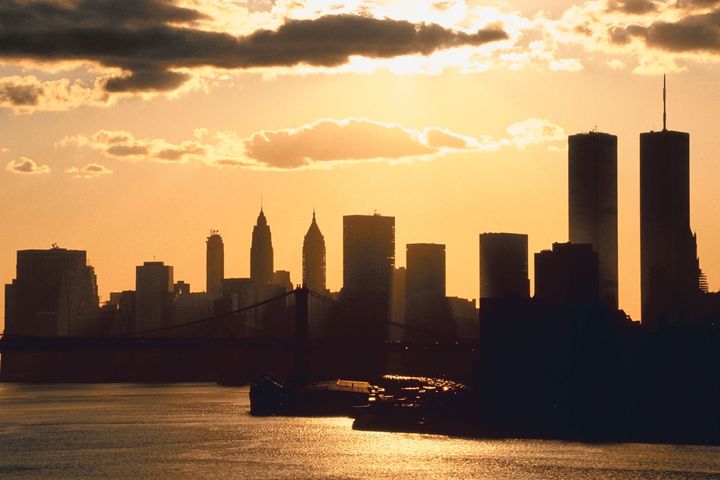
In the nine years since 9/11, more than 238 scientific studies and medical reports in peer review journals have tried to measure the impact of the dust, smoke and ash of the collapsed World Trade Center on the health of the thousands who were exposed to the contaminated clouds. Cumulatively, hundreds of millions of dollars have already been spent screening and treating tens of thousands of responders, volunteers, residents and downtown workers who breathed in the pulverized building materials and hazardous compounds released by the disaster.
Despite all that, what is known with absolute certainty about the dust and its impact is limited, especially when it comes to the questions that most concern everyone who breathed in the dust: will it cause cancer and lead to deaths? Medical investigators readily admit that for many reasons they don't know the answers, and won't know with certainty for years, if ever.
But the more that scientists hedge their bets by saying they don't know, the less that elected officials seem able to say the same. In the face of uncertainty, they increasingly offer conclusions about complex medical mysteries, their false certitude keeping truth at a distance.
At a rally in Lower Manhattan earlier this month, Congressman Anthony Weiner urged passage of the James Zadroga bill (H.R. 847) to reopen the Sept. 11 Victim Compensation Fund and formally authorize long-term screening, monitoring and treatment programs for thousands of people exposed to 9/11 dust. "At least 900 people have died since September 11th, at least, from 9/11-related diseases," Mr. Weiner stated. In so doing, he repeated the chilling 900-plus figure that Senator Kirsten Gillibrand included in a letter urging Senate Majority Leader Harry Reid to bring the Zadroga bill up for a vote.
The problem is that no one -- not the officials, or the advocates of the bill, nor the medical investigators -- yet knows how many people have died because they breathed in the dust. The senator got the statistic about Ground Zero deaths from advocates of the bill, who acknowledge that they extracted it from an ongoing study of deaths by the New York State Department of Health.
But the department has made no such conclusions. State health officials say they know that at least 836 people who worked a day or more at ground zero during the cleanup have died, but the causes listed on their death certificates include traffic accidents, fires, military action (in Iraq and Afghanistan) and suicide, along with cancers and other diseases that may or may not be related to exposure. The overall number of people who toiled at the site could exceed 90,000, and without further information, the 836 deaths over nearly a decade, in itself, tells us little about what happened at ground zero.
"We recognize that people want answers," said Kitty Gelberg, who heads the state's mortality study, "but the data just isn't there yet to provide answers that will satisfy them."
Ms. Gelberg concedes that that's not an easy message for people to accept, and that many have come to expect absolute certainty from science that science often simply cannot deliver.
Thanks to the work of Dr. Paul Lioy of the Environmental and Occupational Health Sciences Institute and others, we now know much more about the very fine particles in the dust. Asbestos, benzene and other known carcinogens were ground up in the complex mixture, but most of the dust was silica material from the pulverized concrete of the towers. Dr. Philip Landrigan of the Mount Sinai School of Medicine, which has screened and treated more responders than any other institution, said the dust penetrated deep into airways, scarring delicate lung tissue, stiffening air passages and decreasing the breathing capacity of thousands of people We know that the concentration of dust in the air on 9/11 and for days afterward was so thick that the highly alkaline material -- as corrosive as strong lye -- burned throats and seared stomachs leading to severe acid reflux and recurring gastrointestinal disease. We know that many who witnessed the horrendous events of that day suffered post traumatic stress, which can have its own multiplying effect on a range of physical ailments.
But there is much more that we don't yet know, which is small consolation for those who are sick. That uncertainty also is complicating the passage of the Zadroga bill as well as clouding the outcome of historic litigation by thousands of responders who are suing the city of New York in federal court.
None of the peer-review studies has yet made a case that cancers have increased. In fact, all three major study groups -- the New York City Fire Department; the Mount Sinai Medical Center; and the World Trade Center Health Registry, the largest effort in U.S. history to track the health effects of a single event -- have not yet come to any conclusions about cancer.
Nor has any study found that responders are dying at rates that would call attention to a particular illness or ailment.
The Zadroga bill is a response to the need for compassion to take the place of certainty. And it would also provide long-term funding for collecting data that can insure that we someday do have clear and conclusive answers. It is now expected to come up for a vote in the House before Congress goes home to campaign. The Senate will have to wait until the lame-duck session after the Nov. 2 mid-term election to consider the bill. For the sake of the responders, and to finally get to the truth, it is time for Congress to act.